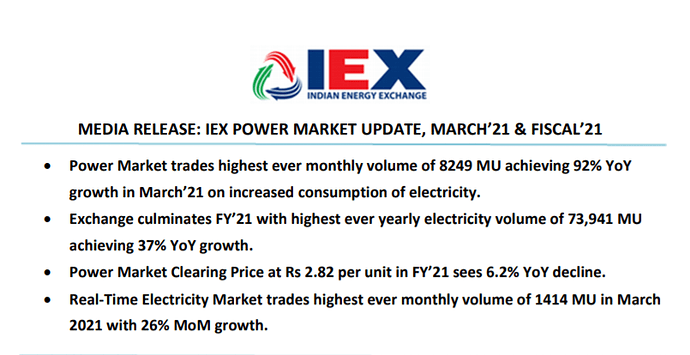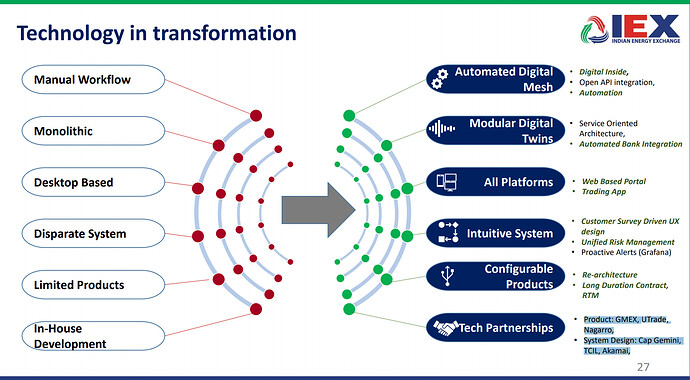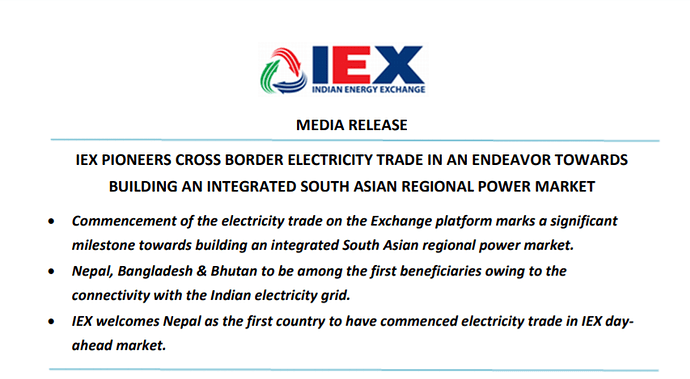That’s an interesting proposition. IEX does handle that kind of volume. But I guess the projection sits on one issue -
After your message, I did look at YoY change in quarterly power exchange volumes vs other components. So in your case, you covered the first layer, ST vs LT (PPAs). But there’s another layer of within ST. It’s not very direct to compute this. More on this in a bit.
Let’s start off with the values being computed. The INCRE_ values show the incremental values vs the same period in the last year. It’s been done for – Power Exchanges (PX), Short Term market (ST), Long Term market (LT) and Total (ToT). Tot = LT + ST.
There are 4 % values computed:
INCRE_ST/INCRE_TOT – To see what part of the incremental value goes to the short term market.
INCRE_PX/INCRE_ST – What percentage of the short term market increase goes to power exchanges.
(INCRE_PX-INCRE_ST)/INCRE_TOT – A clear case of growth in PX from outside the short term market. (Here the condition is that ST growth has to be positive. Why? Because if ST is negative and PX is positive, it is difficult to tell what part of the increase in PX from cannibalizing and what part is from the overall growth. PX is after all a component of ST. If both are positive, it is a clear case of incremental growth – the type we are discussing. If both are positive and PX is greater, it’s growth + cannibalizing).
INCRE_PX/INCRE_TOT – the metric we are discussing. (this is a slightly tricky way of looking at it, as you’ll see in the figures below).
| CY | INCRE_PX | INCRE_ST | INCRE_LT | INCRE_TOT | INCRE_ST/INCRE_TOT | INCRE_PX/INCRE_ST | (INCRE_PX-INCRE_ST)/INCRE_TOT | INCRE_PX/INCRE_TOT |
|---|---|---|---|---|---|---|---|---|
| 2019Q1 | -638 | 18 | 328 | 346 | 5% | 0% | 0% | 0% |
| 2019Q2 | -1089 | -599 | 22050 | 21451 | 0% | 0% | 0% | 0% |
| 2019Q3 | 1600 | -743 | 3054 | 2311 | 0% | 0% | 0% | 69% |
| 2019Q4 | -1029 | -5510 | -17094 | -22604 | 0% | 0% | 0% | 0% |
| 2020Q1 | 3453 | -1186 | 2882 | 1697 | 0% | 0% | 0% | 204% |
| 2020Q2 | 1856 | -4372 | -57093 | -61465 | 0% | 0% | 0% | 0% |
| 2020Q3 | 1596 | -7211 | 10412 | 3202 | 0% | 0% | 0% | 50% |
| 2020Q4 | 9705 | 7159 | 8317 | 15476 | 46% | 136% | 16% | 63% |
Call outs:
You’ll have to be careful of the negatives and 0s in all the % columns columns. 0s either mean one or both values are negative.
I took quarterly because monthly is a mess.
Source is CERC MM Report (I track the volumes on my blog, so I have it handy).
I could be wrong. Please do let me know if you notice something that’s off.



